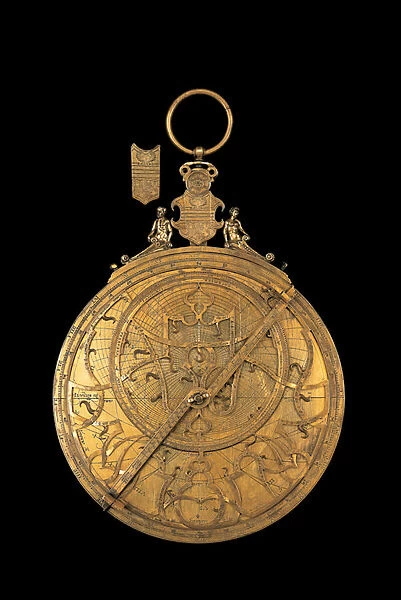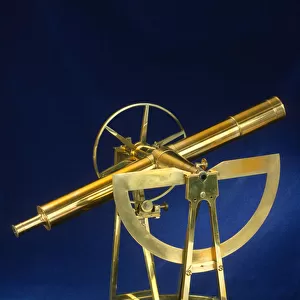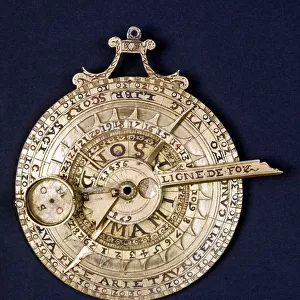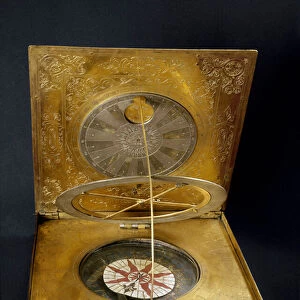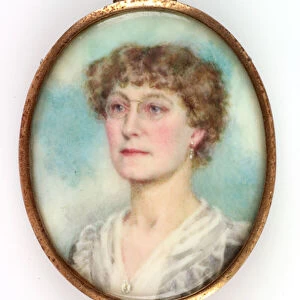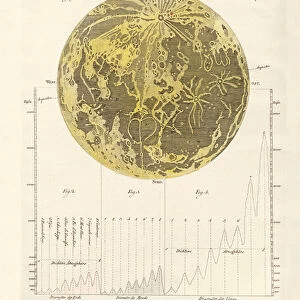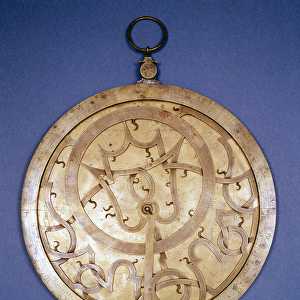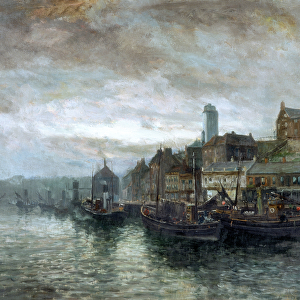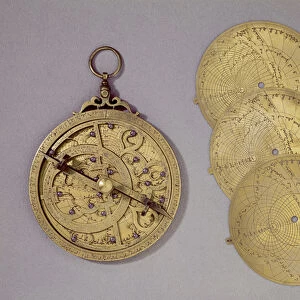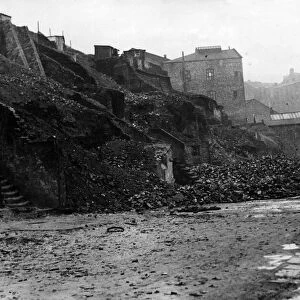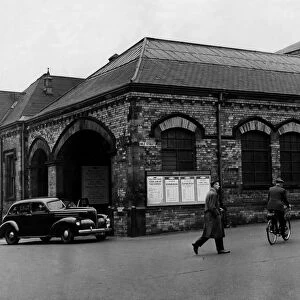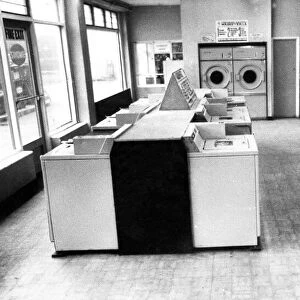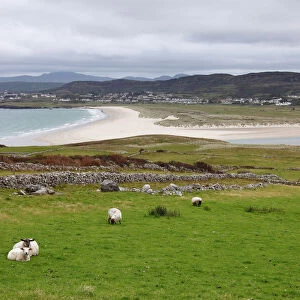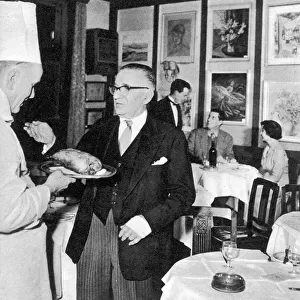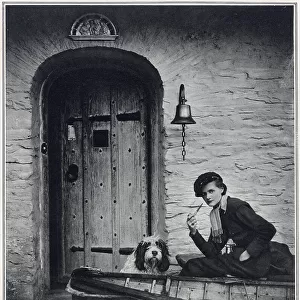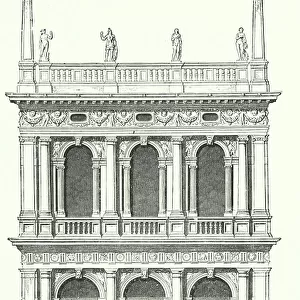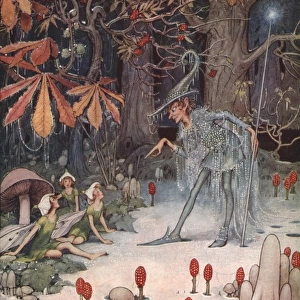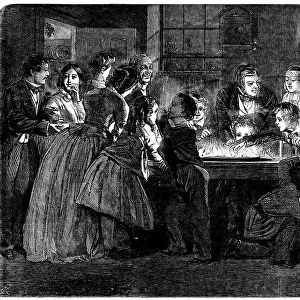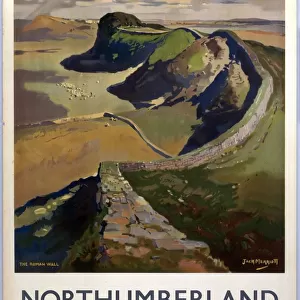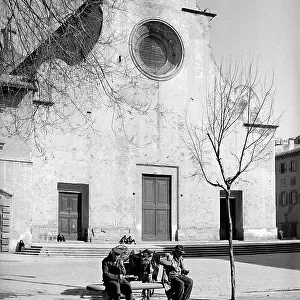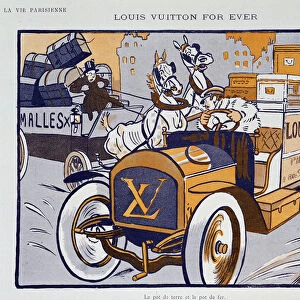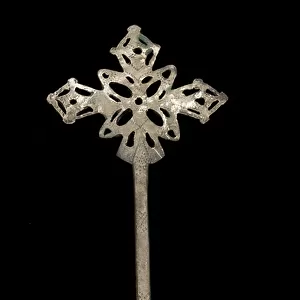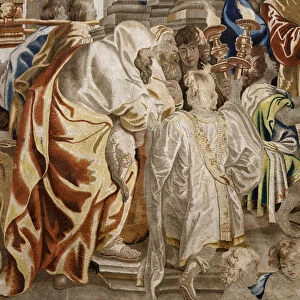Home > Arts > Artists > M > Jacob More
Astrolabe, c. 1570 (gilt brass)
![]()

Wall Art and Photo Gifts from Fine Art Finder
Astrolabe, c. 1570 (gilt brass)
3057865 Astrolabe, c.1570 (gilt brass) by Flemish School, (16th century); diam: 18.5 cm; Private Collection; (add.info.: Attributed to the Arsenius workshop at Louvain, circa 1570. Unsigned and undated. International Checklist No. 562
The throne is attached to a curved bar that is screwed to the limb. At the centre is a shield with the arms of Reichhofrat and Vizekanzeler Jacob Kurtz von Senftenau: double eagle in chief, red/white/red bars (Austria), two goats facing below. This section slides upwards to reveal a magnetic compass, intact with glass covers, engraved with the directions Mer: occi: Sep: ori: The magnetic needle with arrow head North, other end disc with crescent bight. Declination no more than 10 East. The supporters are two reclining satyrs, male and female; the lower parts of the bodies end in scrolls. Above is a shackle and ring. On the reverse is a sun burst, and above is the motto NEL TROPO LVME SVO VIEN A CELARSI. Below the ring is a 6-petalled rosette.
The mater is composed of a plate fitted by 14 rivets to the limb. The limb is divided in degrees, 0-90 in quadrants, subdivided in half degrees, numbered every 10. Also divided in twice twelve hours. The centre of the mater is engraved with a quadratum nauticum, which gives the directions of the thirty-two winds, named in Dutch and Italian.
To fit into the mater are three plates, covering five latitudes, 39 to 51. They have the usual azimuths at 5, almucantars at 2, and Houses of Heaven.
Plate 1A: 39
1B: 42
Plate 2A: 45
2B: 48
Plate 3A: 51
3B: tablet of horizons; shadow square; equal to unequal hours diagram.
On the back is a universal stereographic projection, with 14 stars positioned and named. The edge is divided in degrees, 0-90 in quarters, subdivided in half degrees. The regula is present, but the cursor and brachiolum are lacking.
Star Names on the Back
Eridani extremum Cor
Oculis tauri Extra cau vrsae ma
Hircus Arcturus
Orionis sin. pes Lra
Canopus Aquila
Canis maior Cauda cgni
Canicula Postrema aqua fu:
The rete is in the familiar Flemish tulip pattern, with pointers for forty stars, each with governing planet(s) and magnitude. Zodiac and calendar are on the ecliptic circle; 1st point of Aries nearly 21. Signs are numbered in roman: Aries I; Pices XII. there are scratched numbers on the back identifying star pointers, and these are the same as on many other Arsenius astrolabes.
STAR NAMES ON THE RETE
Cauda ceti Arcturus
Venter ceti Bootis.in: humerus
Medusae caput Lanx boreae clarior
Per.ei latus dex. Coro:eptentrional.s
Nare ceti Cor Scorp
Oculus Caput Hercu:
Hircus ophiu: capu.
orio:in: pes Caput draconis
orio:in: humerus Lra
orionis dex: humus Aquila
Canis maior Cau: cg
Canicula Cephei dex. hum.
Hdrae clara Cauda capricorni
Cor Pegasi rictus
Vr.a maior [7 pointers] Dexter hum.
Crateris fundus Crus aquar
Dor.um [Leo] Pega.. crus.
Cauda leonis Pega.. hume
Corui ala dex: Pega.. vmbil.
Spica virginis Pega.. extrema ala
The pin is fixed to the regula, passes through the alidade, and is held by a wing-nut. the alidade has a pair of sights, with a notch at the top edge, small and large pin-holes. One arm of the alidade has a solar declination scale, the other two hour scales: Horae ortus 1-10, Horae occasus 12-2 (hours from the rising and setting of the sun).
7 in. (18.5 cm.) diam. ); Photo eChristies Images; Flemish, out of copyright
Media ID 23677152
© Christie's Images / Bridgeman Images
Astrolabe Astrology Louvain Navigation Northern Renaissance
FEATURES IN THESE COLLECTIONS
> Animals
> Mammals
> Bovidae
> Aries
> Animals
> Mammals
> Bovidae
> Hircus
> Animals
> Mammals
> Molossidae
> Leonis
> Animals
> Mammals
> Muridae
> Fortior
> Animals
> Mammals
> Muridae
> House Mouse
> Arts
> Art Movements
> Renaissance Art
> Arts
> Artists
> I
> Italian School Italian School
> Arts
> Artists
> J
> Jacob Jacobs
> Arts
> Artists
> M
> Jacob More
> Arts
> Artists
> R
> Roman Roman
> Fine Art Finder
> Artists
> Flemish School
> Fine Art Finder
> Artists
> French School
EDITORS COMMENTS
This print showcases an exquisite Astrolabe from the 16th century. Crafted by the Flemish School and attributed to the Arsenius workshop at Louvain, this gilt brass masterpiece measures 18.5 cm in diameter. The astrolabe features a unique design with a throne attached to a curved bar screwed onto the limb. At its center, a shield displays the arms of Reichhofrat and Vizekanzeler Jacob Kurtz von Senftenau, adorned with a double eagle and red/white/red bars representing Austria. Sliding upwards reveals an intact magnetic compass engraved with directions such as Mer (West), occi (Southwest), Sep (Southeast), and ori (East). The magnetic needle points North while its other end bears a disc with crescent bight. Two reclining satyrs serve as supporters for this stunning piece, their lower bodies ending in scrolls. Above them hangs a shackle and ring, while on the reverse side lies a radiant sun burst accompanied by the motto "NEL TROPO LVME SVO VIEN A CELARSI". A beautiful 6-petalled rosette adorns below. The mater of this astrolabe is composed of plates riveted to the limb, divided into degrees, quadrants, half degrees, and twelve hours. It also includes three plates covering latitudes ranging from 39 to 51. On its backside rests a universal stereographic projection featuring fourteen stars positioned and named accordingly. The rete follows the familiar Flemish tulip pattern pointing towards forty stars along with their governing planets and magnitudes. Overall, this remarkable astrolabe is not only visually striking but also serves as an important historical artifact showcasing both artistic craftsmanship and scientific knowledge from centuries past.
MADE IN THE USA
Safe Shipping with 30 Day Money Back Guarantee
FREE PERSONALISATION*
We are proud to offer a range of customisation features including Personalised Captions, Color Filters and Picture Zoom Tools
SECURE PAYMENTS
We happily accept a wide range of payment options so you can pay for the things you need in the way that is most convenient for you
* Options may vary by product and licensing agreement. Zoomed Pictures can be adjusted in the Cart.

